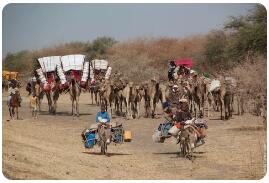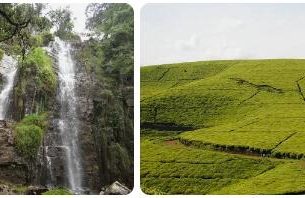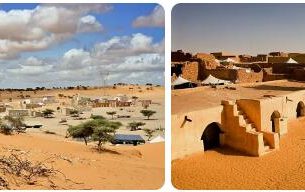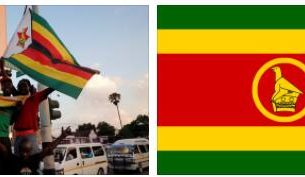Chad – The great country in Central Africa
Chad is almost four times the size of Germany and is located in the heart of Africa. In spite of this, the world public has not yet heard much from this large and centrally located state. Presumably because there was no such bloody tension or civil war as it would have been media effective.
Nevertheless: since independence from France in 1960 there have been repeated unrest; There were disputes above all between the Muslim nomads in the north, who had been dominant in the country in the pre-colonial period, and the residents of the south, Christianized by the Europeans, from whom an elite emerged, among other things through the education system introduced during the colonial period also the first president of Chad came from.
The economy is mainly shaped by agriculture; mineral raw materials are not available or not developed. Even after the autonomy, the country remained in neo-colonial dependency, which hindered its independent economic development. Droughts and civil war did the rest to make Chad a desperately poor country.
Chad is also home to the highest mountains in the entire Sahara: the Tibesti, a rugged volcanic landscape. Trade winds have formed rock towers and gates on the sandstone layers. But too much stands in the way of tourist awareness of this great mountain range, not least the cartographically unrecorded minefields in the Tibesti area on the Libyan border.
| Name of the country | Republic of Chad |
| Form of government | Presidential Republic |
| Geographical location | Central Africa |
| National anthem | La Tchadienne |
| National holiday | August 11 (independence August 11, 1960) |
| Population | approx. 16.5 million (Credit: Countryaah: Chad Population) |
| Ethnicities | approx. 200 ethnic groups, including Sara, Chad groups, Arabs |
| Religions | approx. 56% Muslims, 22% Christians (mostly Catholics) and 22% animists |
| Languages | French, Arabic and around 50 regional languages |
| Capital | N’Djamena with about 1.5 million residents |
| Surface | 1,284,000 km² |
| Highest mountain | Emi Koussi with a height of 3,415 m |
| Longest river | Chari with a length of 1,200 km |
| Largest lake | Lake Chad |
| International license plate | TD |
| Currency | CFA franc |
| Time difference to CET | 0 h |
| International phone code | 00235 |
| Mains voltage, frequency | 220/380 volts and 50 hertz |
| Internet TDL (Top Level Domain) | .td |
Chad: history
Chad by the 19th century
The oldest finds so far of presumed transitional forms between primates and humans come from Chad. It is about 3.5 million (Abel) and 7 million (Toumai) year old skull parts. A first demonstrable settlement in the area took place as early as the 6th millennium BC. Later on, Islamic states developed on Lake Chad as well as Baguirmi, the Logone city-states and the Ouaddaï sultanate. In the 19th century, European explorers began to penetrate the area.
20th century until today
According to Abbreviationfinder website, France occupied Chad around 1900 and incorporated it into French Equatorial Africa in 1908. Between 1909 and 1913 there was bloody fighting between the occupiers and the local population. In 1934 there were first border disputes with the Italian colonial power, which had conquered the northern neighboring country Libya. Independence of the country was proclaimed on August 11, 1960.
The first president was Francois Tombalbaye, who came from the south. In the period that followed, there were increasing conflicts between the Islamic Arab and Berber tribes of the north and the Christian or animist black African population of the south.
After the establishment of the Muslim FROLINAT (Front de Liberation Nationale) in 1966, a civil war broke out. While France was on the side of the government, FROLINAT received support from Libya, Algeria and Sudan.
Libya occupied the Aouzou Strip in 1973. General Malloum came to power in 1975 after a coup. In 1978 there was another military intervention by France. In 1979, after the conquest of N’Djamena, the “Gouvernement d’Union Nationale de Transition” ruled Chad under Weddeye. After the “Second Battle for N’Djamena” Libya intervened in the conflict, but was pushed back by France. With Egyptian, Sudanese and US support, Habré held his ground, conquering N’Djamena in 1982 and establishing the so-called Second Republic. Serious human rights violations occurred in Chad during his dictatorship.
In 1983 the country was divided into two parts along the 16th parallel because the north was occupied by the Libyan military. However, through an offensive by the Chadian government troops in 1986/87 and the French military operation Epervier, Gaddafi was pushed back to the Aouzou strip.
In 1989 the peace treaty of Algiers was signed. In 1990 Habré fell under the opposition leader Déby. A transitional government was created at the 1993 National Conference. In 1994 the International Court of Justice awarded the Aouzou strip to Chad again.
After a failed attempt in 1995, presidential elections were held in 1996, from which Déby emerged victorious, and parliamentary elections in 1997.
At the end of 1998 the armed Tibesti conflict between rebels under Youssouf Togoimi and government troops began. In December 2001 both parties signed a peace agreement. In 2002 President Déby was re-elected. In 2003 the development of the Doba oil fields began. In November 2003, the government executed nine people sentenced to death. In May 2004 there was an attempted coup. In the same month, a parliamentary vote was held on a constitutional amendment.
As a result of the civil war and prolonged periods of drought, Chad is one of the poorest countries on earth. The population is still dependent on international aid. The country has a particularly high infant and child mortality rate. Due to the lack of medical supplies, thousands of people die of epidemics every year. The refugees from the Darfur region in Sudan represent an additional burden.
In early 2008, fighting between government troops and rebels even flared up in the capital. The fighting was so intense that almost all foreigners had to be evacuated. The rebels were and still are at odds with one another, and there are also numerous fighters from Sudan.



